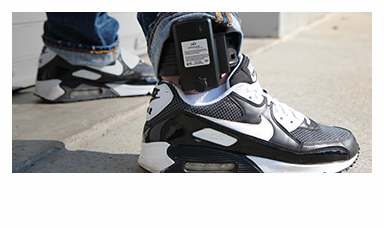The time immediately following an arrest for domestic violence is volatile and dangerous. Short of preventing assaults altogether, keeping victims safe during this period should be the primary goal surrounding Maine’s most frequent violent crime.
To that end, a pilot project in three Maine counties that uses GPS monitoring devices to enforce protection orders is showing promise, matching similar results in other states.
When utilized on the right offenders, GPS monitoring allows victims to feel secure without unduly disrupting their lives. It also can improve conviction rates and help reform perpetrators, and it does so with little cost to the public.
For those reasons, monitoring should be available statewide, and as soon as it can reasonably be implemented.
STATES NOTE SUCCESS
The pilot project began a year ago in Somerset County, thanks to a bill from House Minority Leader Ken Fredette, R-Newport, and funding from Gov. Paul LePage, as well as $15,000 from a fundraiser in the name of Amy Bagley Lake, who was killed along with her two children by her estranged husband in Dexter in 2011.
The project was later extended to Kennebec and Sagadahoc counties after approval from the state Board of Corrections.
In Somerset County, the monitoring ankle bracelets, which alert police when an offender enters a pre-defined “safe zone,” such as the work place of a victim, have been used in eight domestic violence cases, with no violations concerning contact with the victim.
That’s a small sample size, but it’s in line with the experience of other states.
For example, from 2010-11, Connecticut monitored 119 high-risk domestic violence offenders, and during that time none of the victims was harmed again.
Other reviews of long-standing programs show the same thing — that protection orders, regularly violated in other cases, are more likely to be followed if the offender is monitored.
HELPING VICTIMS MOVE ON
That gives victims peace of mind, and it does so without forcing them to move or secure a room in a women’s shelter, of which there are unfortunately too few.
It also forces offenders to learn how to live their lives knowing they cannot contact the victim without repercussions.
That might not prevent the few truly unredeemable violent offenders from further harming their victim.
But for the vast majority of perpetrators, the real threat of being caught is enough to compel them to stop trying.
Monitoring also has a positive effect on the legal system. It keeps alleged offenders out of jail while awaiting trial, which would help ease overcrowding and budget issues in Maine’s corrections system — jailing a prisoner costs about $100 per day, while monitoring, paid mostly for by the offender, costs around $7 a day.
And by preventing an offender from contacting his victim, and intimidating or otherwise coercing her not to testify, monitoring can help raise conviction rates.
Monitoring is not for every offender, and there are concerns about giving victims a false sense of security.
But when used correctly, and in conjunction with threat assessment tools and the good sense of law enforcement officials, monitoring can be a powerful tool for helping victims survive a critical time, and move on with their lives without fear.
Send questions/comments to the editors.


